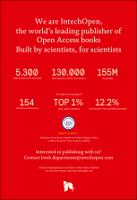Chapter Characterisation of Airborne Particulate Matter in Different European Subway Systems
Author(s)
Alves, Célia
Moreno, Teresa
Martins, V.
Cruz Minguillón, María
Querol, Xavier
Eleftheriadis Luís Mendes, Konstantinos
de Miguel, Eladio
Language
EnglishAbstract
Hypoxia-reoxygenation injury is a commonly used in vitro model of ischemia, which is useful to study the recovery processes following the hypoxic period. Hypoxia can be rapidly induced in vitro by replacing the culture atmosphere with hypoxic or anoxic gas mixture. Cellular injury mostly occurs as a result of energetic failure in this model: the lack of oxygen blocks the mitochondrial respiration and anaerobic metabolism becomes the major source of high-energy molecules in the cells. In the absence of glucose, glycolysis and pentose phosphate pathway fail to suffice the cellular energy prerequisite and longer periods of oxygen-glucose deprivation (OGD) can completely deplete the cellular NAD+ and ATP pools. The lack of NAD+ results in severe metabolic suppression and predisposes the cells to other injury types. This includes oxidant-induced damage, since oxidative stress activates poly(ADP-ribose) polymerase (PARP) that further depletes the cellular NAD+ pool and leads to excessive cell death. The impaired mitochondrial respiration also leads to an increase in the mitochondrial membrane potential and augments the mitochondrial superoxide generation leading to oxidative stress. The above processes ultimately lead to necrotic cell death, but in certain cell types, mitochondrial damage can also trigger apoptosis.
Keywords
hypoxia-reoxygenation injury, poly(ADP-ribose) polymerase, energetic failure, mitochondrial dysfunction, oxidative stressDOI
10.5772/65364Publisher
InTechOpenPublisher website
https://www.intechopen.com/Publication date and place
2017Classification
Respiratory medicine


 Download
Download